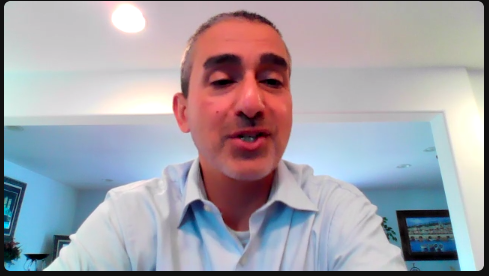Last month, the Biden administration announced new actions and private commitments to bolster the nation’s cyber defense at schools. Administration leaders, school administrators, educators, and education technology providers convened at the White House to discuss how to strengthen the nation’s schools’ cybersecurity amidst growing ransomware attacks.
Frank Pilero, Supervisor of Technology and Data for the Linwood Board of Education in Southern New Jersey, was one of the participants. He shared his experiences of the day and insights on cybersecurity in education during this conversation with eSchool News, which is the first of a three-part series devoted to this issue. Frank emphasized that while cyber threats are prevalent, schools can take proactive steps to protect themselves. Click below to listen and scroll down for the key takeaways along with the government’s approach to tackling this never-ending battle.

Key takeaways include:
Common Challenges: Despite differences in scale, all school districts face cybersecurity challenges, making them enticing targets for cybercriminals.
Importance of Training: Frank emphasized that training is critical, as educators and staff are the first line of defense against cyber threats. Creating a cybersecurity-aware culture is essential.
Data Backups and Recovery: Schools should have robust data backup and recovery plans in place, focusing on how quickly they can recover from a cyberattack. Cloud solutions can help maintain essential services during disruptions.
Attack Vectors: Cyberattacks often target employees, and it’s essential to recognize the various attack vectors that criminals use, such as phishing emails and lateral movement within a network.
Sharing Best Practices: Despite the competitive nature of education, schools should collaborate and share best practices when it comes to cybersecurity to protect the entire community.
Government Support: Frank highlighted the increased support from government agencies, such as the FCC and the FBI, including funding for cybersecurity initiatives and resources to help schools recover from cyberattacks.
Private Sector Commitments: Private companies, like ClassLink and Cloudflare, are committing to making their products “secure by design” and offering cybersecurity resources and services, often tailored for smaller districts.
Sustainability: While funding and resources are becoming available, it’s crucial to ensure the sustainability of cybersecurity efforts over time, given the evolving nature of cyber threats.
Ongoing Vigilance: Cybersecurity is an ever-evolving field, and schools must remain vigilant, adapt to new threats, and continue to educate staff to maintain a high level of security.
More details from the Feds—The NCWES seeks to build and enhance collaboration around four pillars:
1. Equip Every American with Foundational Cyber Skills – enable everyone to enjoy the full benefits of our interconnected society:
o Make foundational cyber skill learning opportunities available to all;
o Promote the pursuit of foundational cyber skills and cyber careers; and, o Foster global progress in foundational cyber skills.
2. Transform Cyber Education – address the immediate demand for a skilled cyber workforce while also preparing learners to meet the future needs of a dynamic technological environment:
o Build and leverage ecosystems to improve cyber education, from K-12 education, to higher education, community colleges, and technical schools;
o Expand competency-based cyber education;
o Invest in educators and improving cyber education systems; and,
o Make cyber education and training more affordable and accessible.
3. Expand and Enhance the National Cyber Workforce – collaborate with a wide range of stakeholders, adopt a skills-based approach to recruitment and development, and increase access to cyber jobs for all Americans, including underserved and underrepresented groups:
o Grow the cyber workforce by proliferating and strengthening ecosystems;
o Promote skills-based hiring and workforce development;
o Leverage the diversity of America to strengthen the cyber workforce; and, o Enhance international engagements.
4. Strengthen the Federal Cyber Workforce – communicate the benefits of careers in public service amongst both job seekers and current employees and lower the barriers associated with hiring and onboarding:
o Drive sustained progress through greater federal collaboration;
o Attract and hire a qualified and diverse federal cyber workforce;
o Improve career pathways in the federal cyber workforce; and,
o Invest in human resources capabilities and personnel.
- Meet the Winners—Dr. Kellie Wilks, Chief Technology Officer, of Ector County Independent School District, TX (ECISD) - April 12, 2024
- Meet the Winners—Prince William County Public Schools (PWCS) in Manassas, Virginia wins the 2024 Community Leadership Award for Digital Equity. - April 12, 2024
- #CoSN2024 Conversation – Tom Ryan Co-Founder K-12 Strategic Technology Advisor Group (NM) - April 10, 2024

